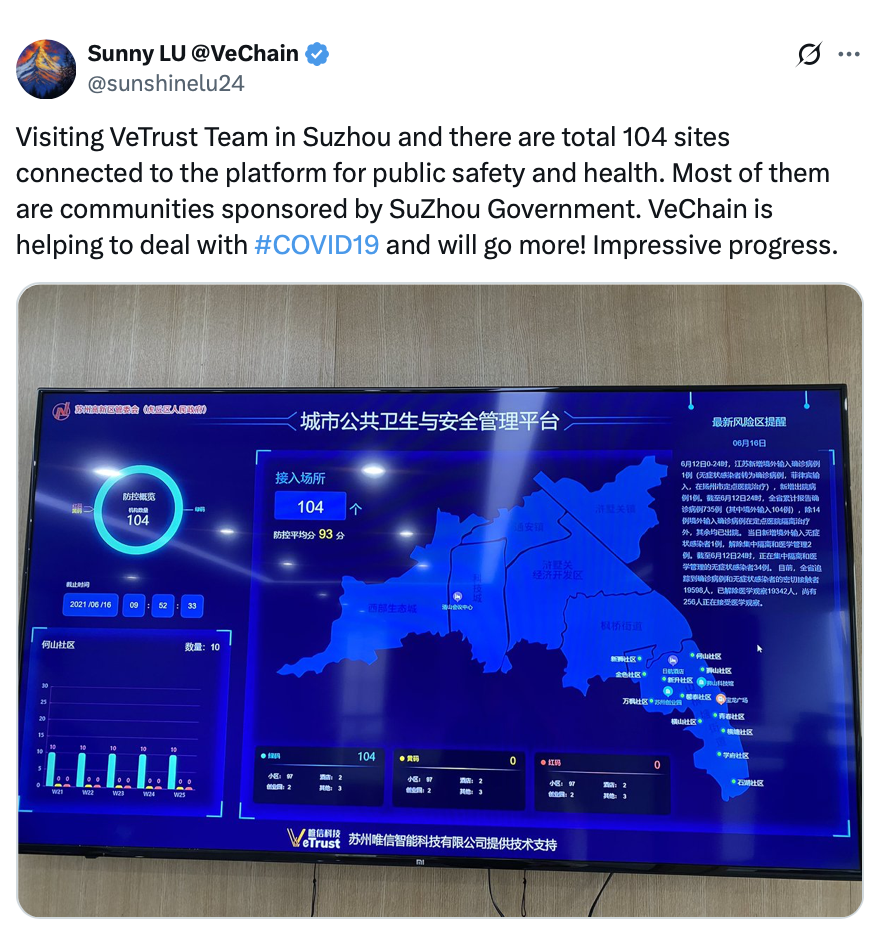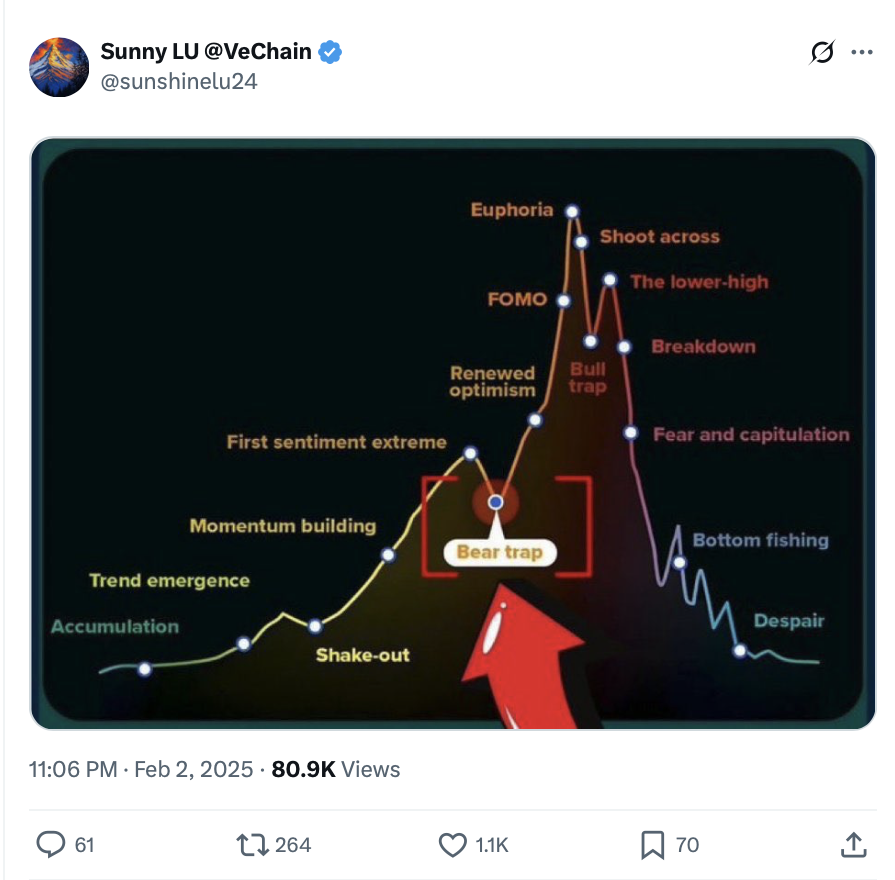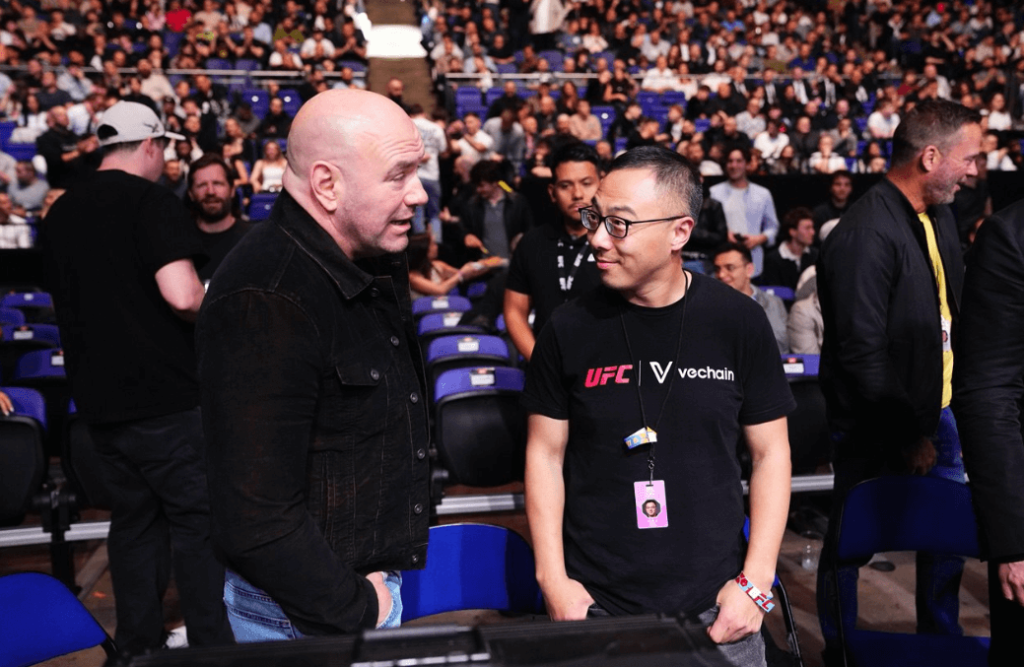VeChain founder and CEO Sunny Lu’s first experience buying Bitcoin is the kind of moment that sticks with you for life, but not in the way most Bitcoin OGs would hope.
“The first encounter with Bitcoin, I got scammed in 2012,” Lu tells Magazine.
The timing couldn’t have been worse. Lu desperately needed that Bitcoin to solve an urgent crisis in his life.
After switching to US servers when he moved from China, Lu had to rebuild his entire progress in World of Warcraft from scratch. He needed in-game currency fast, but he didn’t have any US dollars to pay for it. That’s when a seller offered him an alternative.
“Somebody said, I take Bitcoin,” he says.
It spiked Lu’s curiosity, and so he googled “Bitcoin,” then headed to Taobao (China’s version of Amazon and eBay) where a seller promised him 100 Bitcoin for roughly $300 USD.
Lu, a hardcore gamer at the time, didn’t hesitate and immediately sent the money.
Unfortunately, the Bitcoin never arrived.
The Bitcoin stack would be worth millions today
Even after the recent Bitcoin price plunge, those 100 Bitcoin would be worth $8.7 million at today’s prices. Ouch.

But the experience didn’t sour Lu on the technology. “That opportunity kind of caught my interest to try to analyse whether Bitcoin is really a scam,” says the Shanghai Jiao Tong University engineering graduate.
The expensive but valuable lesson helped push Lu toward building VeChain, the billion-dollar blockchain network he launched just three years later in 2015, alongside Binance founder and former CEO Changpeng “CZ” Zhao.
The project is designed to solve inefficiencies and lack of transparency in business supply chains and processes.
Lu says the name stands for “Verification Blockchain.” “I mean, I’m boring,” Lu laughs.
He originally came up with the idea while serving as the chief information officer for Louis Vuitton China. Although he got to jet between store openings and rub shoulders with celebrities, behind the scenes, Lu was also responsible for the entire information systems of Louis Vuitton’s operations in China.
During that period, Lu had become more interested in Bitcoin, having read the white paper, and began to research blockchain technology more broadly.
After developing a track-and-trace system that followed Louis Vuitton products through the manufacturing steps, Lu realized it would be far more effective if multiple entities could access that data through blockchain technology. That would become the first spark of VeChain’s creation.
Vitalik Buterin was a major part of Sunny Lu’s early blockchain beginnings
His ideas turned into action not long after a chance meeting with Ethereum co-founder Vitalik Buterin in Shanghai in 2015.
Fenbushi Capital founder Bo Shen introduced the pair, and they ended up traveling together on a couple of trips around different cities in China, talking at length about smart contracts, the EVM and what could be built on top of the blockchain.
“He’s open. He was friendly to, you know, have the technical discussion,” Lu says of Buterin. “He’s a genius.”
Those conversations convinced Lu that instead of trying to force enterprise use cases onto existing blockchains, he should build a bespoke chain focused on large-scale, real-world business applications.
“After a few conversations with Vitalik, I was like, okay, why wouldn’t I just build my own dedicated [blockchain] focused on what I need?”
Fenbushi Capital ultimately became the first investor in VeChain, and Buterin was a general partner at the time.
Lu says blockchain technology excitement is down
More recently though, Lu has been feeling bearish on mainstream adoption and senses something is off in today’s crypto market downturn, despite having weathered several previous crypto winters.

He says in past bear cycles, even when crypto token prices sank, there would still be mainstream headlines in the news about use cases for blockchain technology and involvement, but not so much anymore.
“Every project had a…. direction, for some functionalities, use cases,” he says. “But today, I don’t know how long we haven’t had any of those kinds of discussions,” he adds.
Lu argues that so much of the discussion and media is focused on crypto exchange-traded funds, liquidity, and trading curves, which “cannot be like 100% for the entire crypto space,” he says.
He emphasizes there must be a focus on genuine use cases, because what is mainly lagging in the sector is real utility and user growth.
Lu says the entire sector has stalled on delivering accessible, everyday applications and tools that everyday people can use without needing to understand private keys, DEXs, or staking dashboards.
What does VeChain focus on and what is coming up?
VeChain has quietly been integrating across many sectors and brands over the years.
One of VeChain’s first high-profile partnerships started in 2019 with Walmart China, which built a blockchain-based traceability platform on the VeChain network.
The system allows customers to access product information, including the origin, geographic data, inspection reports, and other critical supply-chain metrics, by scanning a QR code on the product.
That same year, VeChain partnered with German automotive giant BMW to develop VerifyCar, a digital car passport designed to combat mileage fraud, a major issue in Germany’s large second-hand car market, where odometer manipulation is common.
In 2020, VeChains became the sole public blockchain protocol of the APAC Provenance Council, which was established to integrate blockchain technology into the food supply chain between Australia and China. In November 2022, TruTrace Technologies partnered with VeChain to enhance its blockchain-based traceability platform, which is already utilized by Shoppers Drug Mart, Canada’s largest retail pharmacy chain, to ensure transparency and product verification within its medical cannabis program.

This year, VeChain added Ultimate Fighting Championship CEO Dana White as its newest official adviser to raise more mainstream awareness of blockchain technology.
UFC had already implemented VeChain’s technology, with near-field communication chips integrated into a new generation of fighter gloves, following a multi-year sponsorship deal worth $100 million.
Lu previously told Cointelegraph that this was done to combat fraud, as fighter apparel is often auctioned off for charity and other causes, but is often fake.
In August, VeChain’s Hayabusa upgrade, which aimed at strengthening network security and long-term economic sustainability, was unanimously approved by stakeholders.
The testnet went live in November, with the full mainnet rollout expected in the near future.
“Normal people” still have no access to crypto, says Lu
Lu is of the opinion that, for most of the world, blockchain still feels out of reach and requires technical knowledge that the average user does not possess.
“Normal people have no access to crypto or to blockchain technology,” Lu says, explaining that while blockchain was designed for inclusiveness, it is currently too “far away” from the everyday Joe.

However, he remains an optimist at heart and believes that broader adoption may not be far off, given the significant improvements in the technology over the years.
“It could be happening very soon, like maybe just in a couple years to three years,” Lu says.
“So what I believe is, Web3 is going to change the world like the internet did again. It just needs to be more inclusive,” Lu says.
“If I look back, like 10 years ago, today’s infrastructure is so much better, so much better than 10 years ago,” he adds.


Ciaran Lyons
BTC white paper hidden on macOS, Binance loses AUS license and DOGE news: Hodler’s Digest, April 2-8
Binance Australia Derivatives’ license revoked, the Bitcoin white paper is hidden on modern macOS and Dogecoin prices spike after Twitter’s icon change.
Read moreXRP surges after Ripple ‘victory,’ Trump Jr. crypto platform plans, and more: Hodler’s Digest, Aug. 4-10
XRP surged 26% after Ripple scores a ‘victory,’ Donald Trump Jr. reveals plans to launch crypto platform: Hodler’s Digest
Read moreGood luck suing crypto exchanges, market makers over the flash crash


